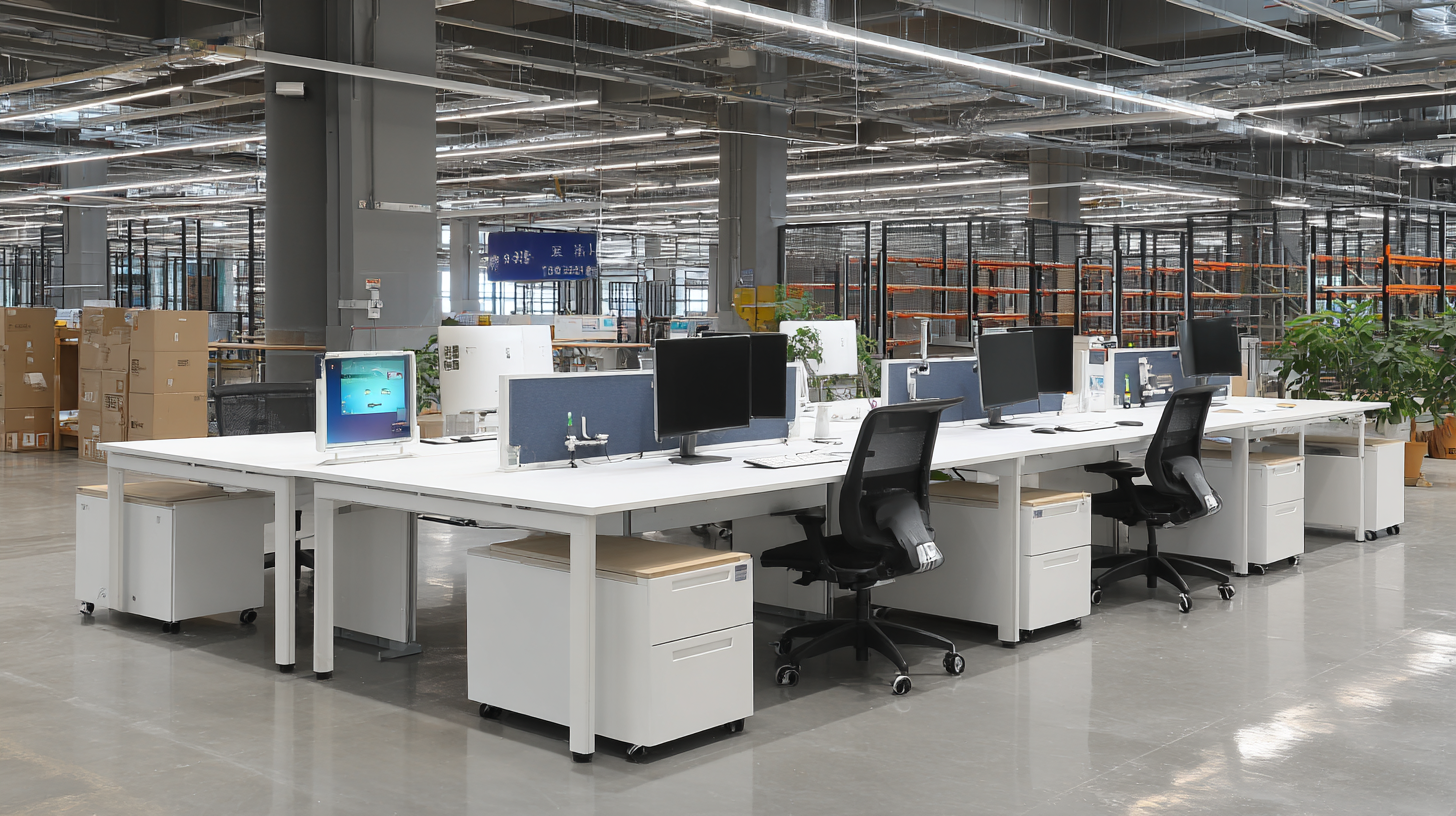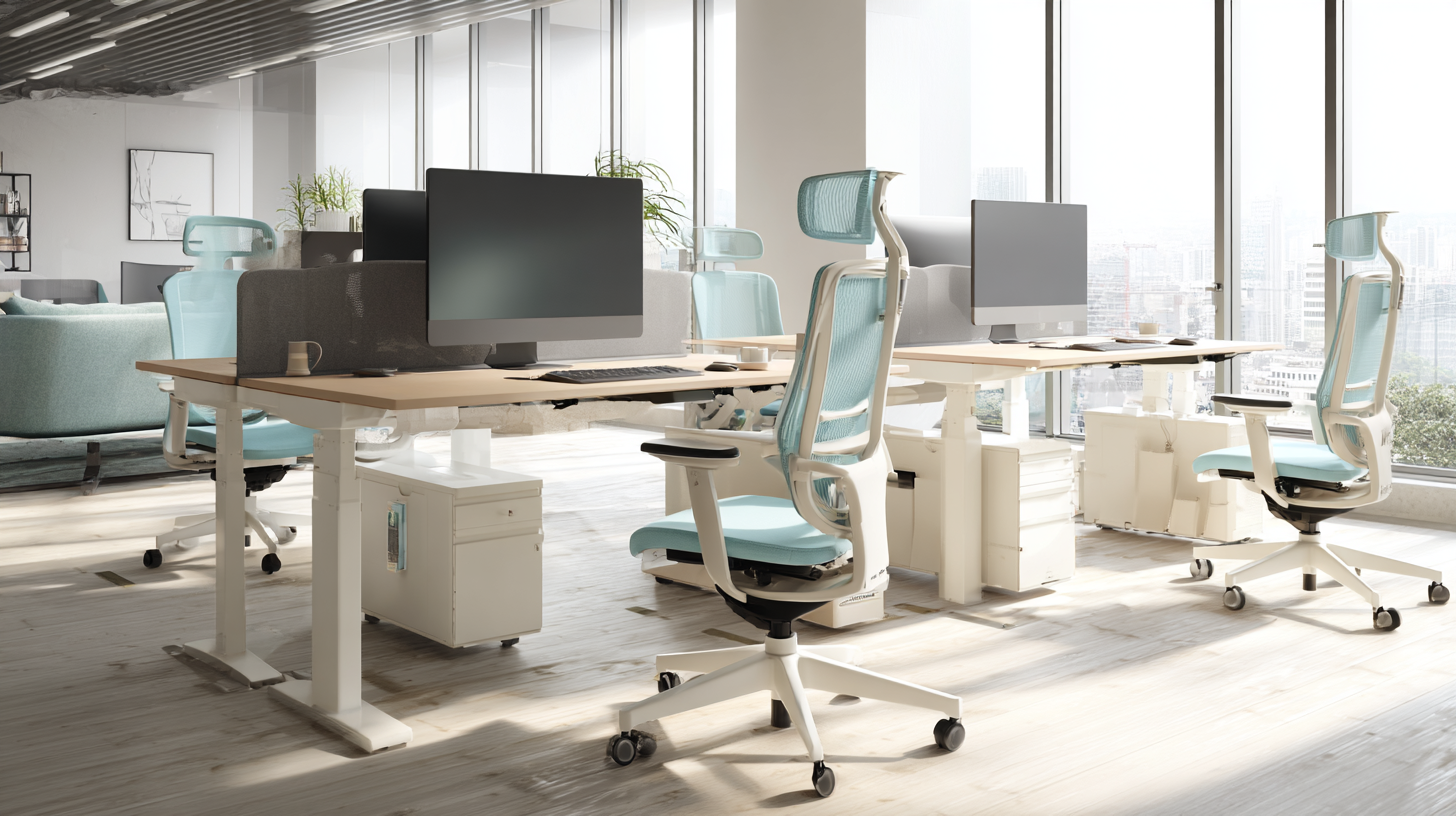Discover Unmatched Manufacturing Excellence from a World Class Chinese Factory for the Best Ergonomic Furniture
In the ever-evolving landscape of modern manufacturing, the demand for high-quality ergonomic furniture continues to surge, propelled by an increased awareness of workplace wellness and productivity. According to a report by Grand View Research, the global ergonomic furniture market was valued at approximately $3.5 billion in 2020 and is forecasted to expand at a compound annual growth rate (CAGR) of around 10% from 2021 to 2028. With the rise of remote work and the need for home office solutions, manufacturers are prioritizing innovative designs that promote comfort and efficiency. This blog explores how a world-class Chinese factory is leading the charge in creating unmatched manufacturing excellence in the ergonomic furniture sector, positioning itself at the forefront of the "Industry 2025" technological trends. As we delve into the intricacies of this industry, we will guide you through the essential elements that define the future of ergonomic solutions for workplaces around the globe.

Understanding Ergonomics: Key Principles for Optimal Furniture Design
Ergonomics is a crucial aspect of furniture design, especially when it comes to creating optimal work environments. Understanding the principles of ergonomics means acknowledging the importance of adjustments in furniture to accommodate various body types and work styles. For instance, the height and angle of office chairs significantly influence spinal alignment and overall comfort. Modern ergonomic chairs are designed to support users throughout their long hours at desks, helping to alleviate common issues such as back pain and discomfort.
In addition to comfort, ergonomic furniture also plays a role in enhancing productivity. When we consider the layout of an office space, it's essential to create an environment that promotes collaboration and communication. Coworking spaces, with their open designs and collaborative areas, serve as great examples of how to integrate ergonomic principles with productivity in mind. By utilizing furniture that supports both comfort and teamwork, businesses can create spaces that foster creativity and innovation, all while prioritizing the well-being of their employees.
Understanding Ergonomics in Furniture Design
Innovative Manufacturing Techniques in World-Class Chinese Factories
In recent years, world-class Chinese factories have emerged as leaders in the production of ergonomic furniture, leveraging innovative manufacturing techniques that improve both efficiency and product quality. According to a report by the International Ergonomics Association, over 80% of office workers experience discomfort due to poor seating. This has created a burgeoning demand for ergonomic solutions that prioritize comfort and health, driving manufacturers to adopt advanced technologies such as automated production lines and smart manufacturing practices.

One notable technique includes the application of Industry 4.0 principles, which integrate IoT (Internet of Things) devices for real-time monitoring and data analysis. A recent study highlighted that factories incorporating these technologies saw a 30% reduction in waste and a 25% increase in productivity. Additionally, 3D printing has revolutionized prototype development, allowing for rapid adjustments and custom designs that meet individual ergonomic needs without significant lead times.
Tips: When considering ergonomic furniture, look for manufacturers that utilize sustainable materials and innovative design techniques. It's essential to evaluate the flexibility of products, ensuring they can adapt to different body types and preferences. Furthermore, always check for certifications from recognized ergonomic organizations to ensure quality and effectiveness in promoting workplace health.
Technical Specifications: Materials and Durability in Ergonomic Furniture
When it comes to ergonomic furniture, the technical specifications of materials and durability play a pivotal role in ensuring optimal comfort and longevity. The best manufacturers, particularly those recognized as world-class Chinese factories, employ advanced materials like high-density foam, breathable fabrics, and durable plastics that withstand the test of time and everyday use. These materials not only enhance the user experience but also provide the necessary support to promote good posture and reduce discomfort during extended periods of use.
In addition to material selection, the manufacturing processes used to create ergonomic furniture are equally essential. Leading factories focus on precision engineering and strict quality control measures, ensuring that each piece not only meets but exceeds industry standards. This meticulous attention to detail results in products that can resist wear and tear while maintaining their structural integrity. As consumers become more aware of the importance of ergonomic design, investing in furniture crafted from high-quality materials with durable construction ensures that they receive unparalleled comfort and support for years to come.

Evaluating Performance: Ergonomic Standards and Certifications in the Industry
When it comes to ergonomic furniture, understanding the various standards and certifications in the industry is crucial for ensuring performance and comfort. High-quality ergonomic furniture should meet specific criteria to promote health and well-being in the workplace. Key standards such as ANSI/BIFMA and ISO 9241 are used to evaluate the ergonomic suitability of chairs and desks, focusing on factors like adjustability, support, and overall design.
**Tip:** Always look for products that have been certified by recognized standards organizations. This can provide peace of mind that the furniture has undergone rigorous testing and meets industry benchmarks.
Furthermore, the performance of ergonomic furniture can also be assessed through user feedback. Many manufacturers encourage customers to share reviews and experiences, which can be invaluable in guiding future purchases. For instance, features like lumbar support, seat depth, and armrest flexibility should resonate with users to ensure they are not just aesthetically pleasing but also functional.
**Tip:** Engage with user reviews and ratings on ergonomic furniture; real-life experiences often reveal important insights that specifications may overlook. Remember, the most effective ergonomic furniture is one that aligns with both your needs and industry standards.
Discover Unmatched Manufacturing Excellence from a World Class Chinese Factory for the Best Ergonomic Furniture - Evaluating Performance: Ergonomic Standards and Certifications in the Industry
| Category | Standard/Certification | Description | Compliance Level |
|---|---|---|---|
| Ergonomic Design | ANSI/HFES 100 | Standard for Human Factors Ergonomics of Computer Workstations | Compliant |
| Sustainability | FSC Certified | Forest Stewardship Council certification for sustainable source of materials | Compliant |
| Health & Safety | BIFMA Level | Business and Institutional Furniture Manufacturers Association certification for sustainability and performance | Compliant |
| Quality Control | ISO 9001 | International standard for quality management systems | Compliant |
| Environmental Impact | Greenguard Gold | Certification for low chemical emissions in products | Compliant |
A Step-by-Step Tutorial: Assembling and Adjusting Your Ergonomic Furniture
When assembling and adjusting your ergonomic furniture, careful consideration of your workspace setup is essential. Ergonomic furniture is designed to promote comfort and efficiency, reducing the risk of strain and injury during extended periods of work. According to recent studies, a well-designed ergonomic office chair can decrease the risk of musculoskeletal disorders by up to 60%, making it crucial to invest time in proper adjustments.
Tips:
- Chair Height: Ensure your chair is adjusted so that your feet rest flat on the floor and your knees are at a 90-degree angle. This setup promotes better posture and circulation.
- Back Support: Adjust the lumbar support to fit the natural curve of your lower back. This support helps maintain spinal alignment during long hours of sitting.
- Desk Height: Your desk should be at a height that allows your elbows to remain at a 90-degree angle, which facilitates a neutral wrist position while typing.
